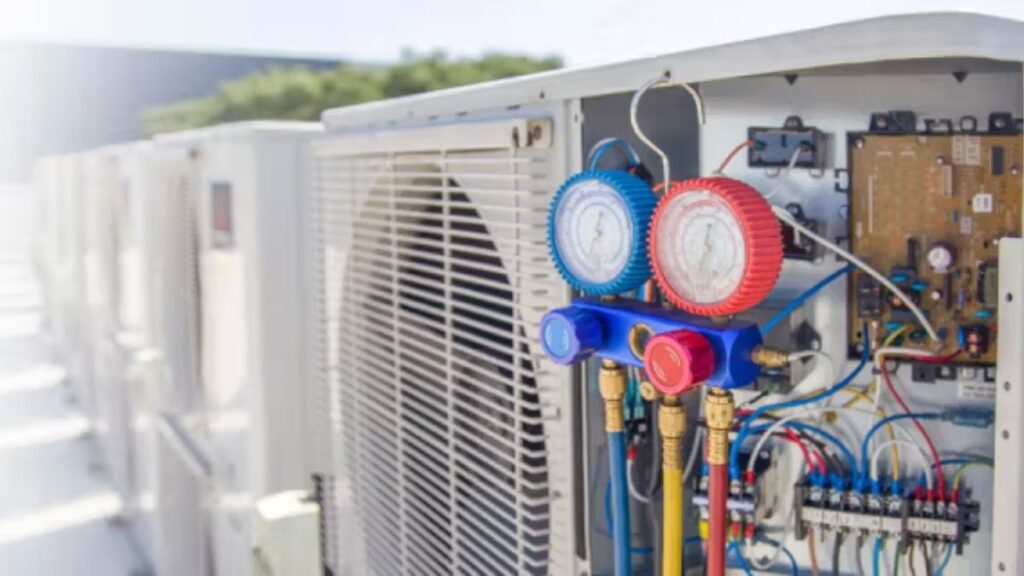As the world moves toward more sustainable cooling solutions, A2L refrigerants have become a hot topic in the HVAC industry.
But what is an A2L refrigerant, and why is it gaining attention? A2Ls are classified as low-GWP (Global Warming Potential) solutions designed to minimize environmental impact while maintaining efficiency in cooling systems.
Known for their mild flammability, they are carefully engineered to balance safety and sustainability.
Understanding their applications, benefits, and challenges is crucial for homeowners, businesses, and technicians navigating the future of refrigeration.
In this article, we’ll break down the key facts about A2Ls, helping you make informed decisions in today’s evolving HVAC landscape. Let’s dive in!
What do you need to know about A2L refrigerants?
They belong to a category defined by their flammability and lower GWP.
The “A” in A2L stands for the refrigerant’s low toxicity (A), while the “2L” indicates that it has a lower flammability compared to other options, classified as “2” (moderate flammability), and “L” denotes that it is a lower risk of igniting compared to other flammable gases.
This group was developed as a more environmentally friendly alternative to traditional options like R-22 and R-410A, which are being phased out due to their high GWP and contribution to ozone depletion.
The goal of A2Ls is to provide a more sustainable option with minimal environmental impact while still offering high energy efficiency and reliable cooling performance.
ALSO READ: A Comprehensive Guide to Knives: Types, Uses, and Buying Tips
Key facts about A2L refrigerants
Environmental benefits
They are considered more environmentally friendly due to their significantly lower GWP compared to older refrigerants.
For example, R-32, one of the most widely used A2Ls, has a GWP of just 675, which is less than a third of the GWP of R-410A (2088).
The reduced GWP makes A2Ls an attractive choice for industries aiming to comply with global climate agreements, such as the Kigali Amendment to the Montreal Protocol, which aims to phase out high-GWP refrigerants.
Flammability
One of their most important characteristics is their flammability, which is classified as “lower flammability.” While they are not as dangerous as high-flammability options (A3), they still require caution when handling.
Safety standards and codes, such as those from the American Society of Heating, Refrigerating and Air-Conditioning Engineers (ASHRAE) and the National Fire Protection Association (NFPA), have been updated to include guidelines for working with them, especially in enclosed spaces or high-risk areas.
Proper ventilation, leak detection systems, and safety measures are essential to mitigate any risks associated with their use.
Energy efficiency
They generally offer excellent energy efficiency, which is one of the reasons they are gaining traction in both residential and commercial HVAC systems.
They often outperform older refrigerants in terms of heat transfer and compressor efficiency, leading to lower energy consumption and operating costs.
This efficiency also helps in reducing carbon emissions from electricity generation, further contributing to their environmental benefits.
Applications
They are being adopted in a wide range of applications, from residential air conditioning units to large commercial refrigeration systems.
R-32, for example, is already being used in new HVAC systems around the world. It is especially common in split-type air conditioners and heat pumps.
In fact, many manufacturers are already designing and producing equipment that is compatible with A2Ls to meet future regulatory requirements and market demands.
Additionally, A2Ls are being tested in the industrial refrigeration sector, as they offer a balance between performance and sustainability.
However, their use in some specific applications, like large systems or environments with limited ventilation, may still be subject to stricter regulations to ensure safety.
Safety considerations
Because they are flammable, handling them requires more safety precautions compared to non-flammable refrigerants.
Proper installation and maintenance by trained professionals are crucial to avoid leaks and ensure safe operation.
Modern HVAC systems that use A2Ls are equipped with advanced leak detection technology, and safety standards have been developed to ensure that risks are minimized in residential, commercial, and industrial applications.
Regulatory compliance
As countries and regions work toward reducing the environmental impact of refrigerants, regulatory frameworks are increasingly focused on lowering GWP. A2Ls have emerged as a key solution to meet these regulatory goals.
In the U.S., for instance, the Environmental Protection Agency (EPA) is gradually phasing out high-GWP refrigerants, and many states are already adopting laws that encourage the use of lower-GWP refrigerants, including A2L options.
Manufacturers are now designing equipment with A2L compatibility in mind to ensure compliance with future environmental regulations.






